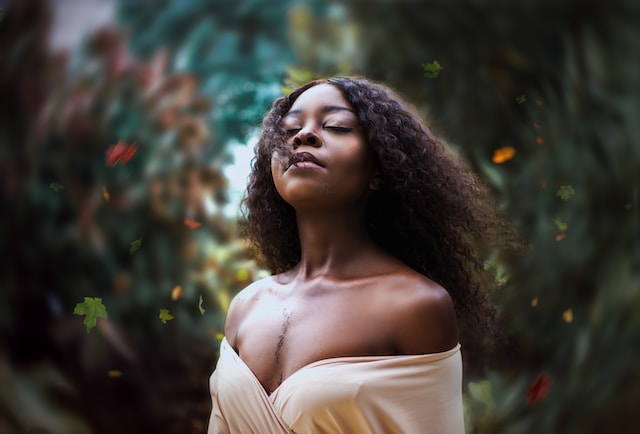It’s no mystery that sleep is a vital component of our overall well-being, and those who sleep well tend to enjoy a wider range of mental, emotional and physical benefits. But, as we people of color continue to wake up to ongoing racial disparities in healthcare, education and in the workplace, just to name a few, these challenges most often compromise our ability to get a meaningful night’s rest and deteriorate our health over time.
According to the American Academy of Sleep Medicine, all adults need seven hours of sleep every night, but at least 25% of Americans have trouble falling asleep or staying asleep. An even closer look at the statistics reveals how discrimination and prejudice illustrate a growing body of research that highlights racial gaps in sleep, as well.
In a national survey conducted and published by the Centers for Disease Control and Prevention (CDC) in 2020, 43.5% of Black or African-American individuals had trouble sleeping, compared with 30.7% of white respondents. And over the course of 15 years, that imbalance is expected to worsen steadily, so alternative methods to get better sleep will remain a priority in our community – a recent phenomenon known as ASMR among them.
If you’ve ever had “the tingles” or felt mildly euphoric as a result of watching a video of someone flipping book pages, tapping with their fingers or gently whispering into a microphone, then chances are you may have experienced ASMR.
An acronym to describe the experience of a pleasurable, tingling sensation in response to gentle, steady movements and sounds, ASMR (autonomous sensory meridian response) videos have taken the internet by storm, collectively racking up trillions of views on YouTube this year alone. While its research is minimal and ongoing to date, 82% of people are said to use ASMR to help them fall asleep, per the Sleep Foundation. They also note it is scientifically unclear why so many people are having elevated physical responses to these audio-visual cues.
Designed by “ASMRtists” – the self-appointed title of content creators who specialize in ASMR triggers – they satisfy an enormous demand to post multimedia content that summons calm, relaxing experiences designed to suppress anxiety and promote more restful sleep. The videos feature well-known, compelling ASMR characteristics such as lower-pitched, complex sounds, slow-paced movements, and up-close, detailed-focused visuals, but lately, those influencers who create and operate under the umbrella of the uniquely niche Black hair ASMR experience specifically are now dominating video sharing websites.
With images of their scratching scalp dandruff or showcasing gloriously healthy afros that are sectioned with a level of surgical precision only worthy of the never-before-seen, nanoscopic moisturizing techniques that accompany them, these vloggers are masterful at invoking what Black fans describe as localized, soothing, prickling sensations that run along the backs of their heads and spines so intensely, they claim these videos are helping them to address challenges with insomnia, emotional stress and ingrained hair trauma, all while feeling represented and validated.
“Girl this video made me cry,” said one of the users in the comments of Gentle Sunset ASMR’s “Scalp Oil on Box Braids for Sleep” YouTube video – it has more than 385,000 views. “I’ve been WAITING to see someone that really embraces Blackness in ASMR. I found you!”
“It’s nice to see more black ASMRtists. I prefer watching hair care and styling videos for afro-textured hair. It’s not only super relaxing, it’s really interesting,” reads another comment.
If you’ve never experienced the effects of ASMR, but are familiar with the immediate relief of treating an itchy scalp, taking down a tight hairstyle or recounting a childhood memory of sitting on the floor in between the legs of someone you love attending to your hair, then you might begin to understand why these sometimes hour-long videos of artists brushing, playing and caring for Black hair are so impactful. Life typically has us Black folk on constant guard, calibrating every thought and move in order to protect ourselves while away from our safe havens; and YouTube front runners such as Gentle Sunset ASMR, Black Girl Magic ASMR and The Tingles ASMR specifically cater to many of the nuances that assist in decompressing and detaching from these agitators.
The videos demonstrate ongoing displays of Black hair being manicured and manipulated in the most tender ways possible that not only provide soothing benefits but are also known to help those with curly and coily hair types to see and treat themselves in more caring ways. The generational pressures of Black hair perfection aren’t usually emphasized in Black hair ASMR and many users find that refreshing. It provides a world where textured hair is never a struggle; it is a space where users are finding it safe to reprogram their own inherent hair trauma and bias instead.
The Final Takeaway
Although ASMR isn’t yet completely understood, researchers say they know it is more than feelings of decreased levels of stress and sadness. To date, there is mostly anecdotal and only some scientific evidence to support how it triggers real physical responses. They say while most people who experience ASMR typically feel the common tingling sensations, many are also showing signs of decreased heart rates and increased skin conductance, an indicator of heightened emotion and attention that calls for further analysis.
If listening to or watching ASMR videos before bed can help you to relax, unwind and fall asleep faster, then experts say that’s great, as soft tones and optics that are soothing, positive and consistent are generally known to calm the mind and improve sleep quality. That said, even though recent, informal reports might suggest it can serve as some type of digital sleeping pill, ASMR is not an evidence-based treatment for chronic insomnia.
If you find that what you’ve been doing routinely isn’t helping, then consulting with a sleep doctor is the best first step.








